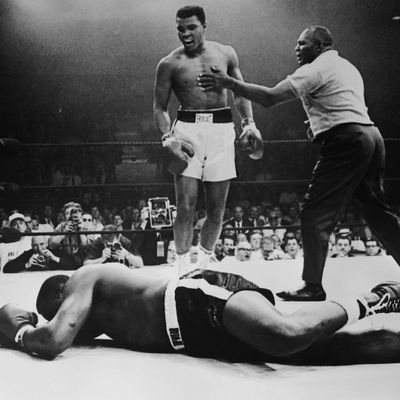
The emergence of a record-large (with 18 candidates and counting) Democratic presidential field, the absence of a dominant front-runner, and the Democratic Party’s proportional delegate award system have led many observers to suggest that the presidential nomination may not be decided until late in the process. Indeed, there’s talk of the possible reappearance of that presumed-to-be-extinct beast, the contested convention.
It could all play out that way, but as Kyle Kondik points out, there’s an alternative scenario that stems from the heavy front-loading of the 2020 primary calendar:
One aspect of this year’s calendar that could speed a knockout blow is that the calendar is frontloaded. As the nominating calendar is currently constructed, almost two-thirds of the total number of pledged delegates will be awarded in the first seven weeks of the nominating season, from Feb. 3, 2020 through March 17, 2020.
Indeed, as Kondik notes, fully 60 percent of pledged delegates will be awarded during a two-week period running from March 3 (generally known as Super Tuesday) through March 17, when primaries are scheduled in fully half the states (a share that could go even higher if late-deciding states like New York move into this window). Depending on what happens in the four February contests that are “protected” from additional competition by national party rules (Iowa, New Hampshire, Nevada, and South Carolina, in that order), this huge bloc of early-to-mid-March states could either produce scattered results that make an early decision impossible, or could instead make one candidate the putative (not official, but certain) nominee.
In one entirely plausible scenario, one of the early front-runners, Joe Biden or Bernie Sanders, wins both Iowa and New Hampshire. No candidate in either party who pulled off that stunt since Iowa emerged as a major nominating-contest state in the 1970s has failed to win the nomination. Conversely, Bill Clinton in 1992 is the only candidate to lose both states and go on to win the nomination, and that anomaly deserves an asterisk because favorite son Tom Harkin took Iowa off the table that year. In another “early knockout” scenario, Kamala Harris does surprisingly well in Iowa, better in Nevada, consolidates the African-American vote to win South Carolina, and then wins big in her home state of California and in southern states with South Carolina–like demographics (six states of the former Confederacy are holding primaries on the same day as California, March 3). Particularly since Harris has “unity candidate” characteristics, she would be hard to stop at that juncture.
However, the March primaries are sufficiently diverse — geographically, demographically, and ideologically — to enable multiple candidates to survive with skill, luck, and money. The only region significantly under-represented in the early going is the Mid-Atlantic (though again, New York could yet move its primary to March).
Whether or not there’s an early knockout, the field will almost certainly be significantly winnowed by March. While Democrats do insist generally on proportional delegate awards (i.e., they ban the kind of winner-take-all contests that helped Donald Trump nail down the GOP nomination in 2016), a major qualification is the 15 percent threshold for winning any delegates at either the statewide or congressional-district level. The same huge field that may keep down popular vote and delegate percentages for those at the top will almost certainly deny delegates to many at the bottom, which means a lot of candidates could drop out before the snows melt as the vital oxygen of money and media vanishes.
And as Kondik reminds us, the winnowing will likely begin before voters vote at all:
Some candidates who seem prominent now won’t even make it to the start of voting. That’s what happened to candidates such as former Govs. Tim Pawlenty (R-MN) and Scott Walker (R-WI) in 2012 and 2016, respectively. The primary process is an unforgiving, and expensive, crucible. That’s why focusing on fundraising is worthwhile: Candidates who build themselves expensive operations need the money to sustain them, and invariably some candidates’ coffers will run dry months before the first votes are cast.
By late this year, candidates who are struggling in the February 2020 states will probably look ahead to that vast and insanely expensive array of March states and despair. That’s one reason the June and July debates may be such a big deal: It’s a rare and cost-effective opportunity for candidates caught in the scrum to put a bullet next to their names (as Beto O’Rourke briefly did late last year and Pete Buttigieg seems to be doing right now) and achieve an otherwise unlikely viability. The period in which they can all dream of claiming victory in Milwaukee in July 2020, however, won’t last much longer.






























